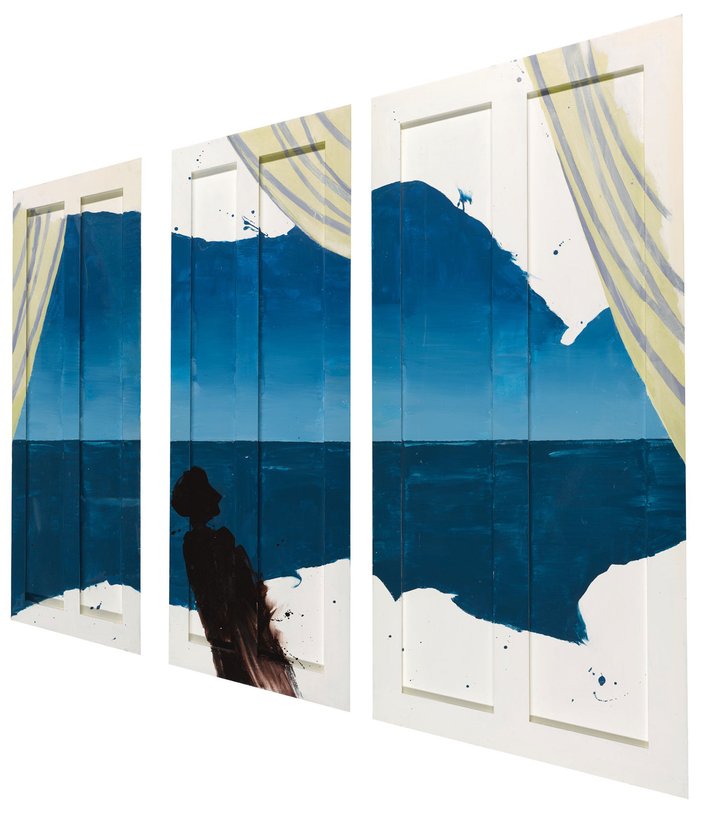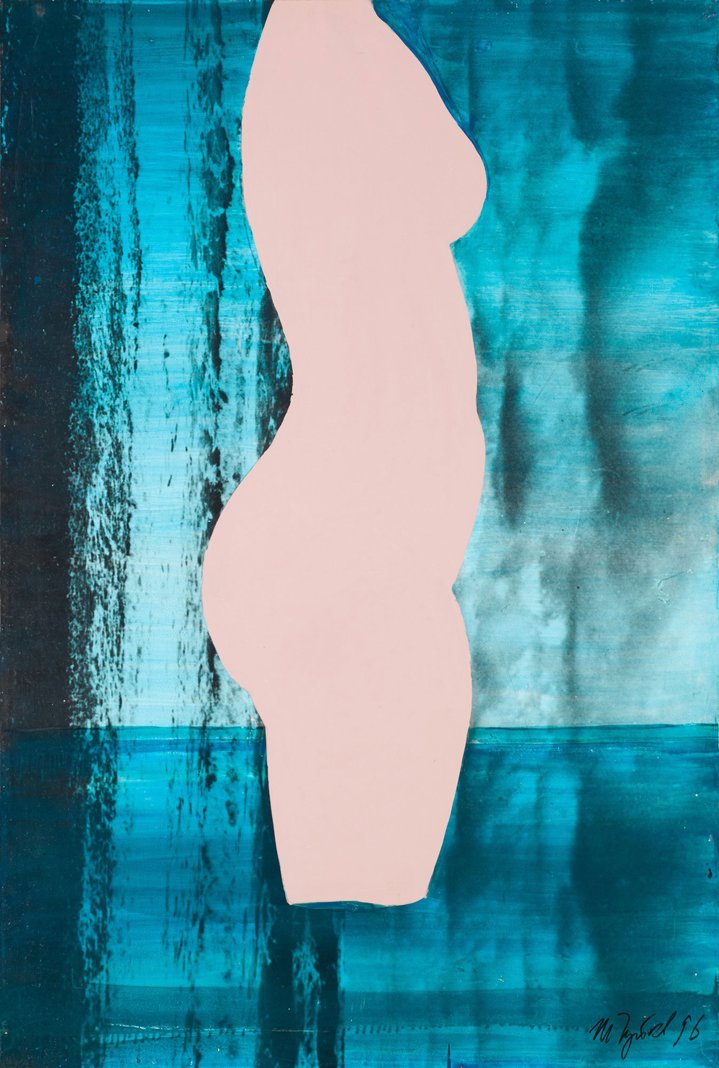Ivan Chuikov: the silence of a quiet trailblazer

Ivan Chuikov. Falling, 1976 Courtesy Ovcharenko gallery
The internationally known Russian nonconformist artist Ivan Chuikov recently died of Covid-19. This winter, Moscow’s private Ovcharenko gallery is staging a solo exhibition in his memory.
Ivan Chuikov’s recent death at the age of 85 is a loss for Russian culture. A modest man, he quietly blazed a trail for the art of painting at a time when it was being eclipsed by new media. To the frustration of art historians and critics, his work always defied the usual labels such as Minimalism, Pop or Sots Art. However, for mainstream conceptualists, his art was perhaps seen as too visual. Like many of his contemporaries, his rightful place in art history is still to be established as Moscow Conceptualism is only now being included into the global narratives of post-modernist art.
He was born in 1935 to parents who were both painters. They had come from Central Asia to Moscow in the 1920s to study at the Vkhutemas art school, the Russian version of Bauhaus. His mother was taught there by Kazimir Malevich (1879–1935) and Robert Falk (1886–1958).
Chuikov showed a precocious talent at drawing and, while still a student, he exhibited at the 1957 World Youth and Students’ Festival in Moscow, where contemporary American art was shown to the Soviet public for the first time.
His path to artistic maturity was not easy. His father Semyon Chuikov (1902–1980) was a painter in the grand Soviet academic tradition whose best-known work ‘The Daughter of Soviet Kyrgyzstan’ was illustrated in all children’s Soviet textbooks and hung in the State Tretyakov Gallery. As artists, father and son thus stood on opposite sides of the ideological divide.
The pressure from outside to conform to Socialist Realism led to a series of crises in the early 1960s as Chuikov searched for his own artistic direction. He eventually left Moscow to teach art in distant Vladivostok for a few years.
After returning to the capital, he was increasingly frustrated by the imposed priority on teaching the principals of academic realism. It was during this difficult period that he destroyed all his works. His earliest surviving paintings thus only date from the late 1960s. The origin of what was to become a life-long series of works based on the window, for which he is best known, dates back to 1967. A year earlier, the American artist Sol Lewitt (1928–2007) had first defined Conceptual movement, saying: “In conceptual art, the idea or concept is the most important aspect of the work.” Chuikov’s windows subvert the tradition of depicting perspective in painting. In these works, the three-dimensional structure of the window frame itself creates space.
His first breakthrough came in 1976, when he took part in an important group exhibition at the Moscow studio of Leonid Sokov (1941--2018). Exhibiting in Soviet galleries was an impossibility for artists like Chuikov. Nonconformist artists could only show their works in artists’ studios or flats. In 1977, Chuikov exhibited at the Venice Biennale in what came to be known as the ‘Biennale of Dissent’, which opened a window to the West on unofficial Soviet art.
By the late 1970s, Chuikov had reached a dead-end with his windows series. It was then he began to develop his fragments. He had, after an exhibition, placed several small works together in front of a larger one on the floor and realised the pictures had a rapport between themselves. Placing two paintings together was like creating a collage and he used that in a whole series of works starting from 1982.
His work is known for its bright, colourful palette. Alluring primary and neon colours which attract attention, as well as simplified forms, are also classic hallmarks of Pop Art. Employing a simple visual language is key to Chuikov’s work.
“Problems of style and aesthetics do not interest me in themselves. The aesthetics of my works are determined by the desire for simplicity and the use of certain deliberate limitations, such as the absence of distortion, the simplification of textures and use of colour conventions, e.g. the sky is blue, plants are green, the human body is pink,” is how we put it.
Chuikov eventually moved with his family to Cologne, at the time a magnet for contemporary art. He had a reputation for being solitary, yet art for him was an activity which connected him with others. Like many of his contemporaries he was deeply affected when Perestroika brought with it the end of the close-knit underground art circles he had been used to in the Soviet Union. He called it a tragedy.
His crowning year came in 1998, when the State Tretyakov Gallery staged his solo show, the first by a conceptual artist from his generation. Having been forced underground as a nonconformist for most of his professional career, that museum exhibition turned him into a Russian classic. As it had been in his youth and throughout his life, art and family were inseparable and he spent the last 15 years of his life in Dusseldorf where he shared a studio space with his wife and daughter.
All Russian nonconformist artists whose work fits into the canon of Conceptualism could be called unsung heroes. It was the fate of the Soviet bloc’s early post-modernists, whose art had long been hidden from view. Chuikov is a shining light whose work deserves reassessment to find its rightful place.




















